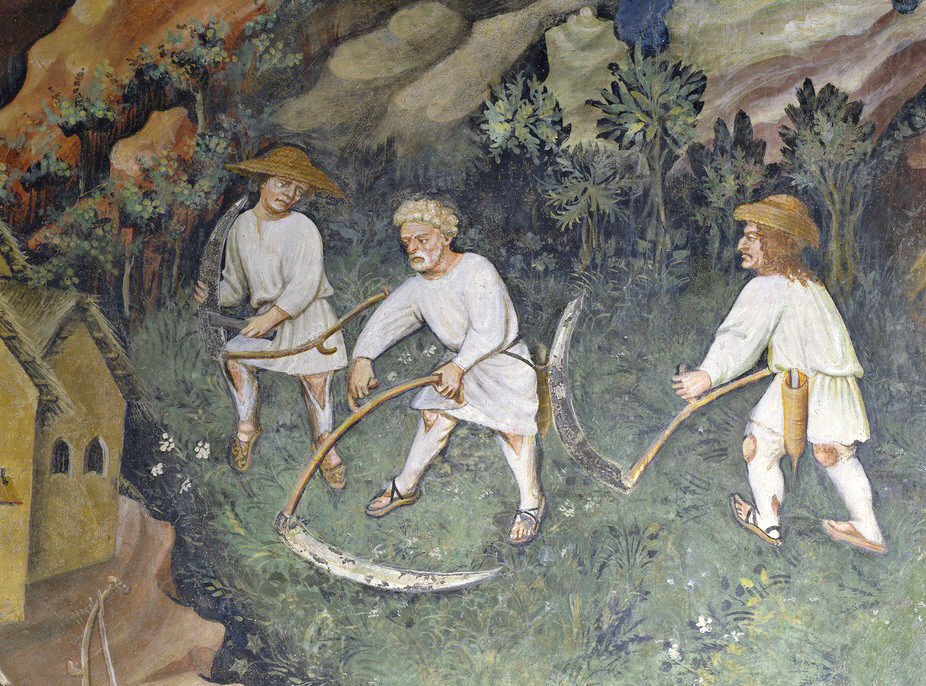The Historical Sew Monthly 2018: Inspiration for Challenge #5: Specific to a Time of Day or Year
The Historical Sew Monthly 2018 is well underway now, and it’s my duty and honour to write the inspiration post for our fifth challenge of the year: Specific to a Time (of Day or Year). I was slightly panicked when I realised this theme would fall to me. I’m not at all an expert at pre-1700s fashions, and this is a challenge that’s particularly tricky before the 19th century (ish), when specific garments for different times of day became common. But with help from my awesome co-moderators, I’ve found examples from a range of eras – enjoy! In chronological order: This ca. 1400 cycle of frescos of the months from the Castello del Buonconsiglio in Trento, Italy, provides a wonderful look at late Medieval fashions by season, with warm layers for winter snowfights: Flowing garments for spring romance (note the love-knots on the gentleman’s tunic): And sunhats and light shirts (and sandals!) for harvest labours. The sunhats do double duty for this challenge, being both daytime, and summer, specific: Elizabethan costume plates also show wonderful …



 ). And added the bit about it reminding you of Neapolitan ice cream. I’m glad I wasn’t quite alone in thinking that a bit of mint makes Neapolitan so much better. The Total: …
). And added the bit about it reminding you of Neapolitan ice cream. I’m glad I wasn’t quite alone in thinking that a bit of mint makes Neapolitan so much better. The Total: …